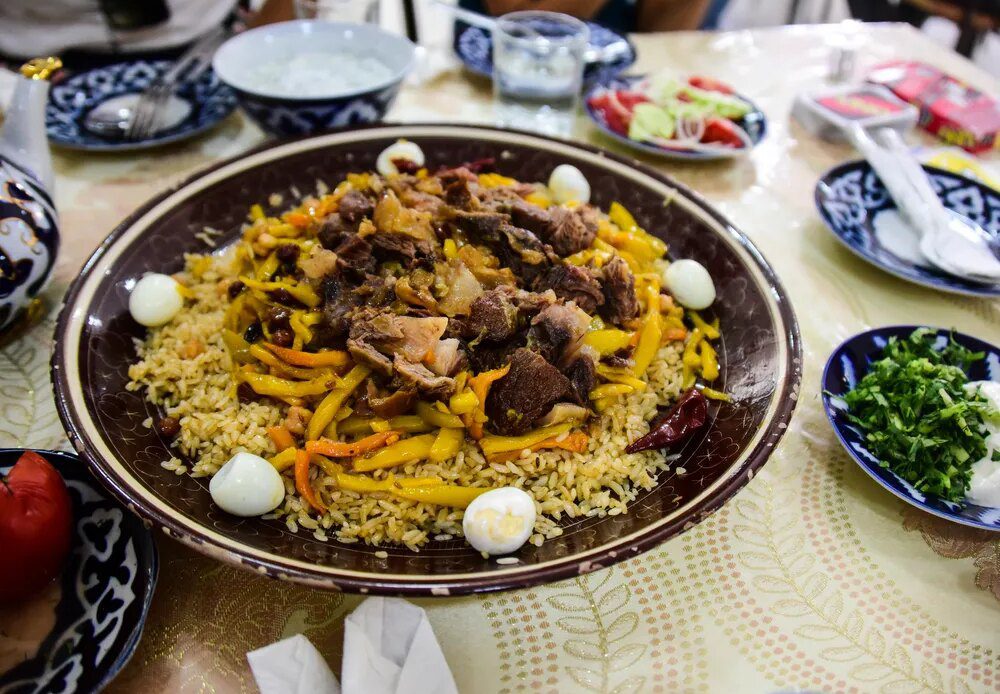Plov is a dish made of rice, beef or lamb, oil or animal fat, carrots (usually cut into matchsticks), and onions, cooked with cumin and salt in a large pot.
Sergio Amiti/Getty Images
Uzbeks have many reasons to eat plov. Occasions like weddings, funerals, births and Navruz (Persian New Year) call for the cumin-scented rice loaded with cubes of tender meat and studded with melting onions and spiced carrot sticks. For some, it’s even a routine weeknight meal. The truth is, plov is good anytime in the minds of many Central Asians. It’s the national dish of Uzbekistan, which succeeded in getting it on UNESCO’s Intangible Cultural Heritage of Humanity list in 2016, but many neighboring countries like Azerbaijan, Kazakhstan and Tajikistan also count plov as one of their main dishes.
As an old Uzbek saying goes, “If you’re rich, eat plov; if you’re poor, eat plov.” This has been the lived experience of Damira Inatullaeva, a New York resident who grew up in Samarkand, an ancient city in southeastern Uzbekistan that lay along the Silk Road. “I first remember eating plov when I was 4 or 5 years old,” she says. “But at that time, plov was only a holiday dish, because it was not easy times, when I was young.” After a career as a doctor, Inatullaeva moved to the United States in 2013 and started teaching Uzbek cuisine for League of Kitchens, a New York City cooking school where immigrant women lead classes in their home kitchens. By then, she was making plov a couple times a week for her family.
Meanwhile, Umida Karl, who with her husband co-owns the Uzbek restaurant Uma’s in New York City’s Rockaway Beach neighborhood, grew up in Samarkand eating plov cooked by her mother about once a week. “I always think of my mom when I eat plov,” she says. “She was a very good cook—her plov was delicious.” Now, plov is the first entree listed on Uma’s menu. Karl estimates that 200 people order plov in a typical week at the restaurant—it’s by far the most popular dish. And when the steaming mound of rice arrives at your table, with aromas of cumin and garlic wafting up from the plate, it’s hard not to salivate. Chunks of meat, carrot matchsticks, barberries and plump chickpeas glisten amid the rice, and each bite is a hearty reminder of comfort at its finest.
At its core, plov is a dish…
Click Here to Read the Full Original Article at Travel | smithsonianmag.com…
